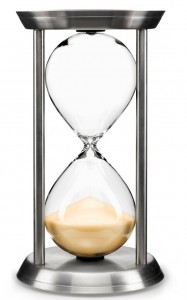 Whether you need to bill your clients the time your work on a drawing or just want to know how efficient you are (maybe your boss wants to know), you can do it in AutoCAD. You do this with the TIME command, which automatically tracks the time you work on a drawing.
Whether you need to bill your clients the time your work on a drawing or just want to know how efficient you are (maybe your boss wants to know), you can do it in AutoCAD. You do this with the TIME command, which automatically tracks the time you work on a drawing.
To use the TIME command, enter time on the command line.
You see the following listing:
- Current time: Obviously, this shows the current time, but also includes the date
- Created: The date and time the drawing was created
- Last updated: The time when the drawing was last saved
- Total editing time: The accumulated time spent in the drawing from session to session. AutoCAD does not include plotting time or time that you worked but quit without saving your changes
- Elapsed timer: Also accumulated time spent in the drawing, but you can turn this on and off as well as reset it
- Next automatic save in: Shows when your drawing will be automatically saved. Use the OPTIONS command and display the Open and Save tab to set how often you want to automatically save your drawing
Next is the Enter option [Display/ON/OFF/Reset]: prompt. Here’s what those options do:
- Display: Updates the listing with current times
- ON and OFF: Turns the elapsed time on and off
- Reset: Resets the elapsed time to zero
Using these options, you can keep track of the time you spend on a drawing.
Comment from a reader that we find useful to share here. – TIME, of course, tracks elapsed time not actual working time. So, if you leave the timer on while at lunch TIME reports incorrectly (unless you are discussing work over lunch). TIME must be turned OFF and ON when not working on files.
Another option
The Express Tools EDITTIME command (type it on the command line) tracks active editing time. It can represent your actual work more accurately than the TIME command, but you need to start it to start tracking. You can reset the time and use the timeout option to suspend counting after a certain period of inactivity.
 Do you track your drawing time? Share your tips and techniques by leaving a comment!
Do you track your drawing time? Share your tips and techniques by leaving a comment!
- Combine or subtract 2D shapes to create custom shapes - February 17, 2022
- Working with linetype scales - January 18, 2022
- Rename named objects–blocks, dimension styles, layers, and more - December 21, 2021

 Instagram
Instagram LinkedIn
LinkedIn Facebook
Facebook 
Thank you for such a simple yet important tip. For years I have been working off one project drawing as a template and the time spent on it is accumulative which makes the calculated time spent on new projects very difficult. Resetting it per project just made my life easier when it is time to invoice.
Very important article. Freelancers and even professionals working at design firms need to keep track of their time. Obviously, it makes sense for freelancers to track time. But as for professionals, it needs to be done because that firm needs to monitor where are the designers spending most of their time. It will allow them to optimize their processes. Thansk, Ellen!
Great Tip Ellen! I actually use this so much that I had to build in a Tab in my DWT, just for my Project Time. Thanks!
Useful tip, Ellen!
TIME, of course, tracks elapsed time not actual working time. So, if you leave the timer on while at lunch TIME reports incorrectly (unless you are discussing work over lunch). TIME must be turned OFF and ON when not working on files.
SAVEAS drawings used to reset TIME. I used TIME as a simple method to determine the original owner of drawings. What are the chances two drawings start at exactly the same time (to three decimal places of a second), start on days students were absent, start several years before students knew about AutoCAD, or were completed in less than one minute?
Can you batch check the time on multiple drawings to compare them?
I can gain the knowledge from your site which is really interesting. Thank you so much for sharing valuable information.